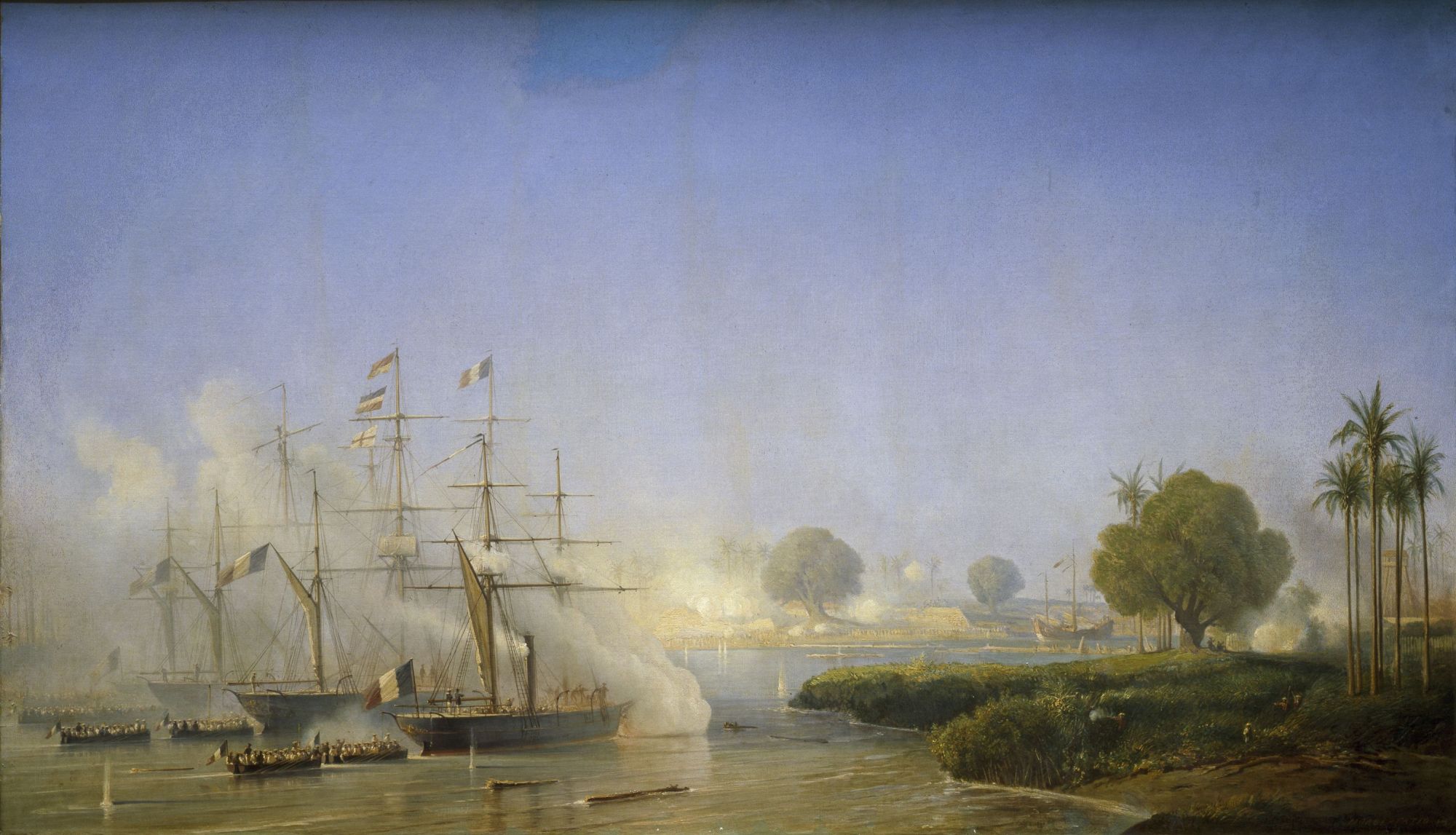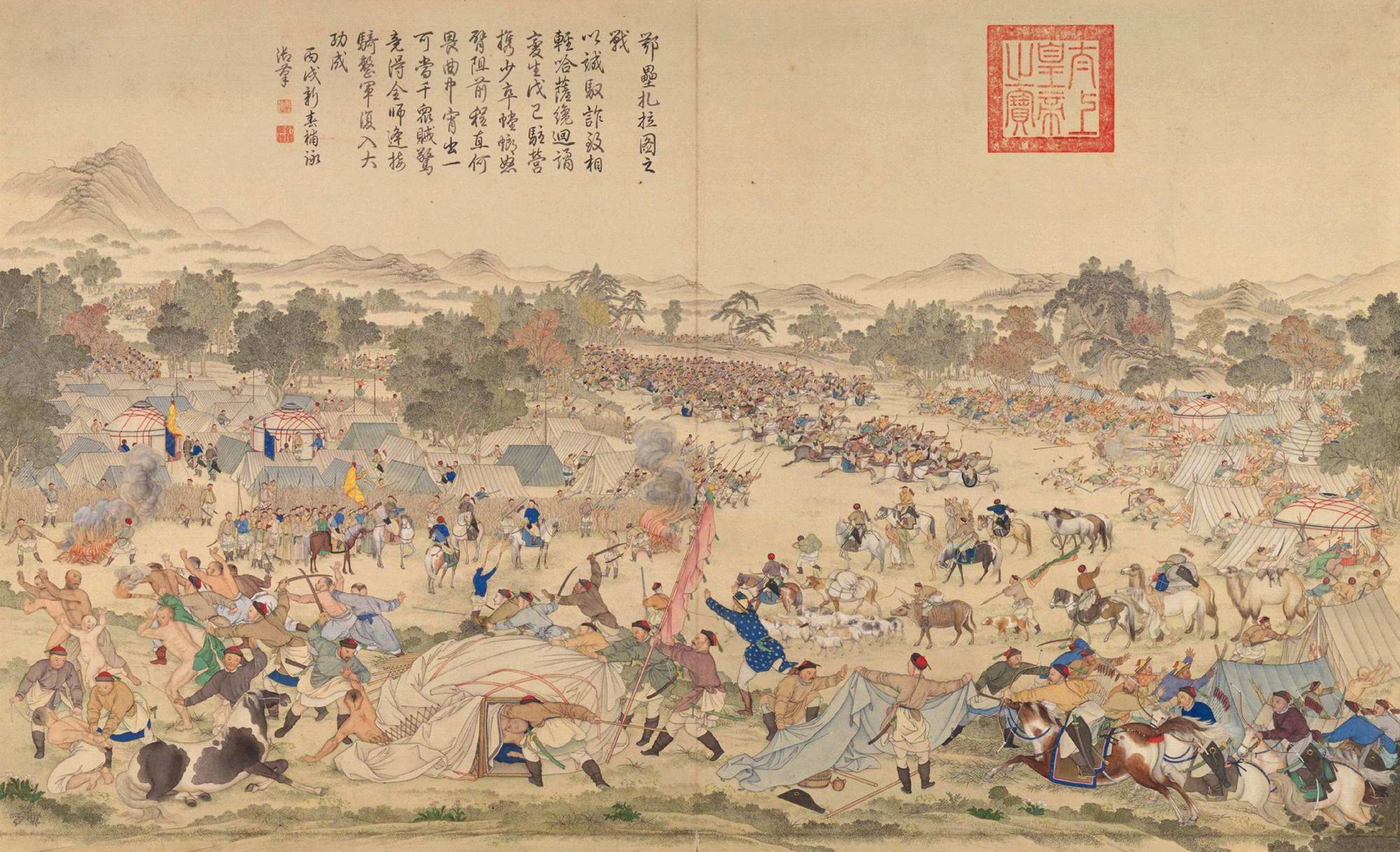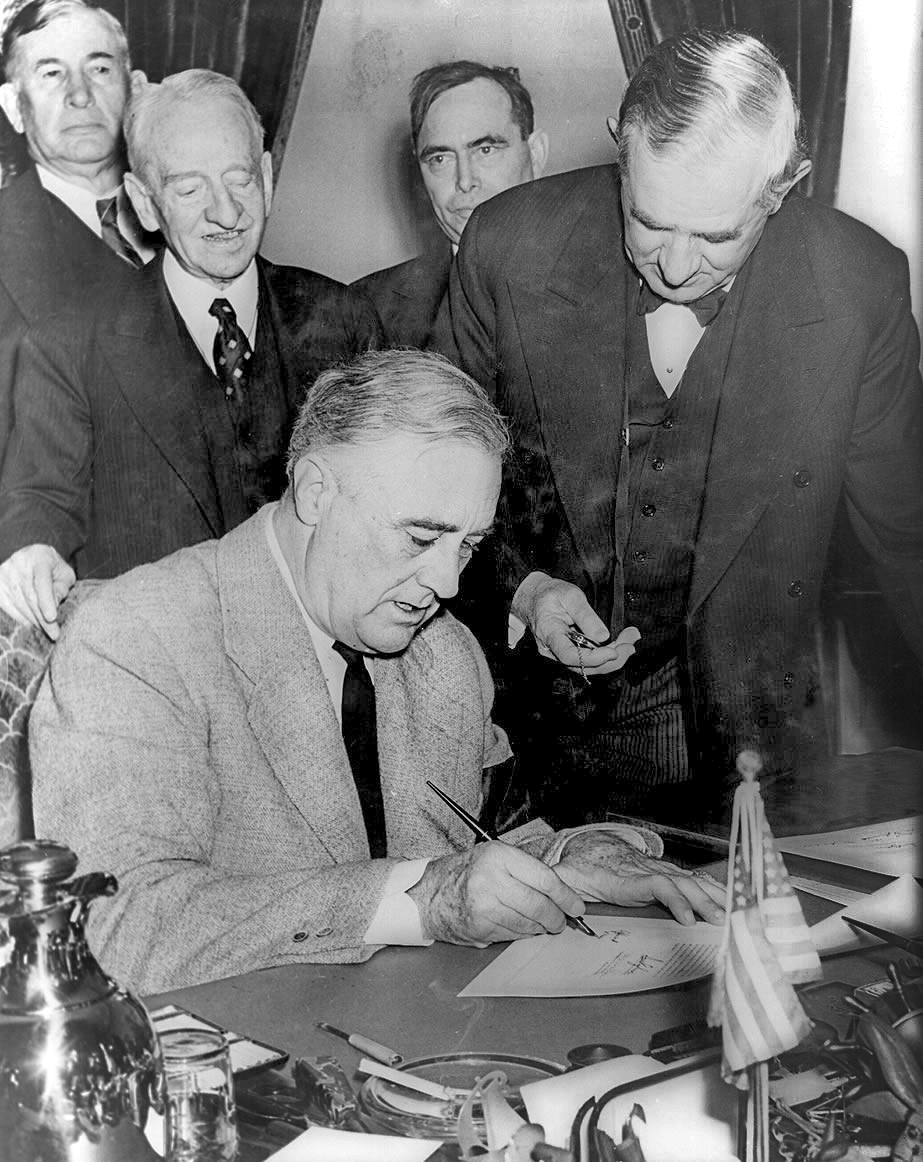|
Sino-French War
The Sino-French or Franco-Chinese War, also known as the Tonkin War, was a limited conflict fought from August 1884 to April 1885 between the French Third Republic and Qing China for influence in Vietnam. There was no declaration of war. The Chinese armies performed better than in their other nineteenth-century wars. Although French forces emerged victorious from most engagements, the Chinese scored noteworthy successes on land, notably forcing the French to hastily withdraw from occupied Lạng Sơn in the late stages of the war, thus gaining control of the town and its surroundings. However, a lack of foreign support, French naval supremacy, and northern threats posed by Russia and Japan forced China to enter negotiations. China ceded to France its sphere of influence over Northern and Central Vietnam, which respectively became the protectorates of Tonkin and Annam. Both sides ratified the Treaty of Tientsin and no diplomatic gain was reaped by either nation. On another ... [...More Info...] [...Related Items...] OR: [Wikipedia] [Google] [Baidu] |
French Conquest Of Vietnam
The French conquest of Vietnam (1858–1885) was a series of military expeditions that pitted the Second French Empire, later the French Third Republic, against the Vietnamese empire of Nguyễn dynasty, Đại Nam in the mid-late 19th century. Its end results were victories for France as they defeated the Vietnamese and their Chinese allies in 1885, incorporated modern-day Vietnam, Laos, and Cambodia into the French colonial empire, and established the territory of French Indochina over Mainland Southeast Asia in 1887. A joint Franco-Spanish expedition was initiated in 1858 by invading Tourane (modern day Da Nang) in September 1858 and Saigon five months later. This Cochinchina campaign, four-year campaign resulted in Emperor Tự Đức, Tu Duc signing a treaty in June 1862, granting the French sovereignty over three provinces in the South. The French annexed the three southwestern provinces in 1867 to form Cochinchina. Having consolidated their power in Cochinchina, they conquer ... [...More Info...] [...Related Items...] OR: [Wikipedia] [Google] [Baidu] |
Prince Gong (Qing Dynasty)
Yixin (11January 1833– 29May 1898), better known in English as PrinceGong or Kung, was an imperial prince of the Aisin Gioro clan and an important statesman of the Manchu-led Qing dynasty in China. He was a regent of the empire from 1861 to 1865 and wielded great influence at other times as well. He was one of the twelve iron cap princes of the Qing Dynasty. Yixin was a man of great talent, excelling in both literature and martial skills, and was among the most capable members of the imperial family. However, he was never favored by his father, the Daoguang Emperor, to succeed to the throne, which meant he spent his life in the role of a political aide rather than a ruler. In 1860, during the Second Opium War, when the British and French forces invaded Beijing, Yixin was entrusted with negotiating peace and signed the Treaty of Beijing on behalf of the Qing court. In 1861, after the death of his elder brother, the Xianfeng Emperor, Yixin, in collaboration with Empress Dowager ... [...More Info...] [...Related Items...] OR: [Wikipedia] [Google] [Baidu] |
Central Vietnam
Central Vietnam ( or ), also known as Middle Vietnam or The Middle, formerly known as by the State of Vietnam, by the Republic of Vietnam, or '' Annam'' under French colonial rule, is one of the three geographical regions within Vietnam. The name Trung Bộ was used by the emperor Bảo Đại when he established administrative level higher than Province in 1945, instead of the Trung Kỳ which recalled the French occupation. This name was officially used by government of the Democratic Republic of Vietnam and is popularly used today. The two south central costal provinces Ninh Thuận and Bình Thuận are sometimes seen as part of the Southeast region. Administration Central Vietnam includes 3 administrative regions, which in turn comprises 19 First Tier units. Municipality (thành phố trực thuộc trung ương) Of all 19 First Tier units, 1 is municipality and 18 are provinces. Gallery See also * Northern, Central and Southern Vietnam *Regions of Vietnam ... [...More Info...] [...Related Items...] OR: [Wikipedia] [Google] [Baidu] |
Sphere Of Influence
In the field of international relations, a sphere of influence (SOI) is a spatial region or concept division over which a state or organization has a level of cultural, economic, military, or political exclusivity. While there may be a formal alliance or other treaty obligations between the influenced and influencer, such formal arrangements are not necessary and the influence can often be more of an example of soft power. Similarly, a formal alliance does not necessarily mean that one country lies within another's sphere of influence. High levels of exclusivity have historically been associated with higher levels of conflict. In more extreme cases, a country within the "sphere of influence" of another may become a subsidiary of that state and serve in effect as a satellite state or '' de facto'' colony. This was the case with the Soviet Union and its Eastern Bloc after World War II. The system of spheres of influence by which powerful nations intervene in the affairs of others ... [...More Info...] [...Related Items...] OR: [Wikipedia] [Google] [Baidu] |
Lạng Sơn
Lạng Sơn () is a city in far Northern Vietnam, and the capital of Lạng Sơn Province. It is accessible by road and rail from Hanoi, the Vietnamese capital, and it is the northernmost point on National Route 1. History Due to its geography as Vietnam's gateway to China (being located just across from Guangxi), Lạng Sơn (諒山) and its ancient citadel have been in the path of many invasions, and were the site of three French defeats during the colonial era. Occupied by Qing forces during the military buildup that preceded the Sino-French War, the city was occupied by France after the two-week Lạng Sơn Campaign in February 1885. However, the French brigade there conducted a hasty retreat after launching a failed attack at the Battle of Bang Bo into China; the " retreat from Lạng Sơn" became the most controversial aspect of the war and led to the fall of Jules Ferry's ministry. Outnumbered French colonial forces clashed with the Japanese 5th Division in the Battle ... [...More Info...] [...Related Items...] OR: [Wikipedia] [Google] [Baidu] |
List Of Chinese Wars And Battles
The following is a list of wars and battles involving China, organized by date. Ancient China Imperial China Qin dynasty (221–206 BCE) Han dynasty (206 BCE – 220 CE) Chu-Han Contention (206–202 BCE) Western Han (206 BCE – 9 CE) Xin dynasty (9–23 CE) and early Eastern Han (25–36 CE) Eastern Han – middle period (36–184) End of the Han dynasty (184–220) Three Kingdoms period (220–280) Jin dynasty (265–420), the Southern Dynasties (420–587), the Sixteen Kingdoms (304–439) and the Northern Dynasties (386–581) Sui dynasty (581–618) Tang dynasty (618–907) Five Dynasties and Ten Kingdoms Period (907–960) Song dynasty (960–1279) Liao dynasty (907–1125) Jurchen Jin dynasty (1115–1234) Yuan dynasty (1271–1368) Ming dynasty (1368–1644) Qing dynasty (1644–1912) Modern China Yuan Shikai-led Republic of China (1912–1949), Republic of China *Bai Lang Rebellion (1911–1913 ... [...More Info...] [...Related Items...] OR: [Wikipedia] [Google] [Baidu] |
Declaration Of War
A declaration of war is a formal act by which one state announces existing or impending war activity against another. The declaration is a performative speech act (or the public signing of a document) by an authorized party of a national government, in order to create a state of war between two or more states. The legality of who is competent to declare war varies between nations and forms of government. In many nations, that power is given to the head of state or sovereign. In other cases, something short of a full declaration of war, such as a letter of marque or a covert operation, may authorise war-like acts by privateers or mercenaries. The official international protocol for declaring war was defined in the Hague Convention (III) of 1907 on the Opening of Hostilities. Since 1945, developments in international law such as the United Nations Charter, which prohibits both the threat and the use of force in international conflicts, have made declarations of war large ... [...More Info...] [...Related Items...] OR: [Wikipedia] [Google] [Baidu] |
Vietnam
Vietnam, officially the Socialist Republic of Vietnam (SRV), is a country at the eastern edge of mainland Southeast Asia, with an area of about and a population of over 100 million, making it the world's List of countries and dependencies by population, fifteenth-most populous country. One of two communist states in Southeast Asia, Vietnam shares land borders with China to the north, and Laos and Cambodia to the west. It shares Maritime boundary, maritime borders with Thailand through the Gulf of Thailand, and the Philippines, Indonesia, and Malaysia through the South China Sea. Its capital is Hanoi and its largest city is Ho Chi Minh City. Vietnam was inhabited by the Paleolithic age, with states established in the first millennium BC on the Red River Delta in modern-day northern Vietnam. Before the Han dynasty's invasion, Vietnam was marked by a vibrant mix of religion, culture, and social norms. The Han dynasty annexed Northern and Central Vietnam, which were subs ... [...More Info...] [...Related Items...] OR: [Wikipedia] [Google] [Baidu] |
Qing China
The Qing dynasty ( ), officially the Great Qing, was a Manchu-led imperial dynasty of China and an early modern empire in East Asia. The last imperial dynasty in Chinese history, the Qing dynasty was preceded by the Ming dynasty and succeeded by the Republic of China. At its height of power, the empire stretched from the Sea of Japan in the east to the Pamir Mountains in the west, and from the Mongolian Plateau in the north to the South China Sea in the south. Originally emerging from the Later Jin dynasty founded in 1616 and proclaimed in Shenyang in 1636, the dynasty seized control of the Ming capital Beijing and North China in 1644, traditionally considered the start of the dynasty's rule. The dynasty lasted until the Xinhai Revolution of October 1911 led to the abdication of the last emperor in February 1912. The multi-ethnic Qing dynasty assembled the territorial base for modern China. The Qing controlled the most territory of any dynasty in Chinese h ... [...More Info...] [...Related Items...] OR: [Wikipedia] [Google] [Baidu] |
Liu Yongfu
Liu Yongfu () (10 October 1837 – 9 January 1917) was a Chinese warlord, second president of the Republic of Formosa and commander of the celebrated Black Flag Army. Liu won fame as a Chinese patriot fighting against the French colonial empire, French Empire in northern Vietnam (Tonkin) in the 1870s and early 1880s. During the Sino-French War (August 1884 – April 1885), he established a close friendship with the Chinese statesman and general Tang Jingsong, and in 1895, he helped Tang organise resistance to the Japanese invasion of Taiwan (1895), Japanese invasion of Taiwan. He succeeded Tang as the second and last president of the short-lived Republic of Formosa (5 June–21 October 1895). Early years Liu Yongfu was born on 10 October 1837, in the town of Qinzhou (Ch'in-chou, ) in southern China, close to the Vietnamese border. Qinzhou, now in Guangxi province, was at that time in the extreme southwest of Guangdong province. The ancestral home of Liu's family was the village o ... [...More Info...] [...Related Items...] OR: [Wikipedia] [Google] [Baidu] |
Sun Kaihua
Sun Kaihua (died 1893) was a military student of Hunan, who joined Bao Chao's army and fought against the Taiping and Nien rebels, during which time he was wounded. He was rapidly promoted until he became a Brigade General at Zhangzhou in Fujian in 1866. In 1878 he saw service against the Taiwanese aborigines Taiwanese may refer to: * of or related to Taiwan **Culture of Taiwan **Geography of Taiwan ** Taiwanese cuisine *Languages of Taiwan ** Formosan languages ** Taiwanese Hokkien, also known as the Taiwanese language * Taiwanese people, residents of ..., but he is best known for his repulse of the French at the Battle of Tamsui in 1884. For this he was made a noble of the 7th grade, and in 1886 became Commander-in-Chief in Fujian. As a military officer he was well educated, and was popular with foreigners and Chinese alike. Orders were issued that his career was to be recorded in the history of the dynasty, and memorial temples were to be erected at the scenes of his chief ... [...More Info...] [...Related Items...] OR: [Wikipedia] [Google] [Baidu] |
Liu Mingchuan
Liu Mingchuan () (1836–1896), courtesy name Xingsan, was a Chinese military general and politician during the late Qing dynasty. He was born in Hefei, Anhui. Liu became involved in the suppression of the Taiping Rebellion at an early age, and worked closely with Zeng Guofan and Li Hongzhang as he emerged as an important Huai Army officer. In the aftermath of the Sino-French War, succeeding Ding Richang he was appointed the first governor of the newly established Taiwan Province (Qing), Taiwan Province. Today he is remembered for his efforts in modernizing Taiwan during his tenure as governor, and several institutions have been given his name, including Ming Chuan University in Taipei. Early life and military career Liu was born into a poor family of farmers at Hefei, Anhui, Anhui Province. His father died when Liu was 11 years old. At age 18, Liu joined a local gang of bandits in the mountains, and at 20 he took part in the early Nien Rebellion. At 23 he changed his mind and ... [...More Info...] [...Related Items...] OR: [Wikipedia] [Google] [Baidu] |




